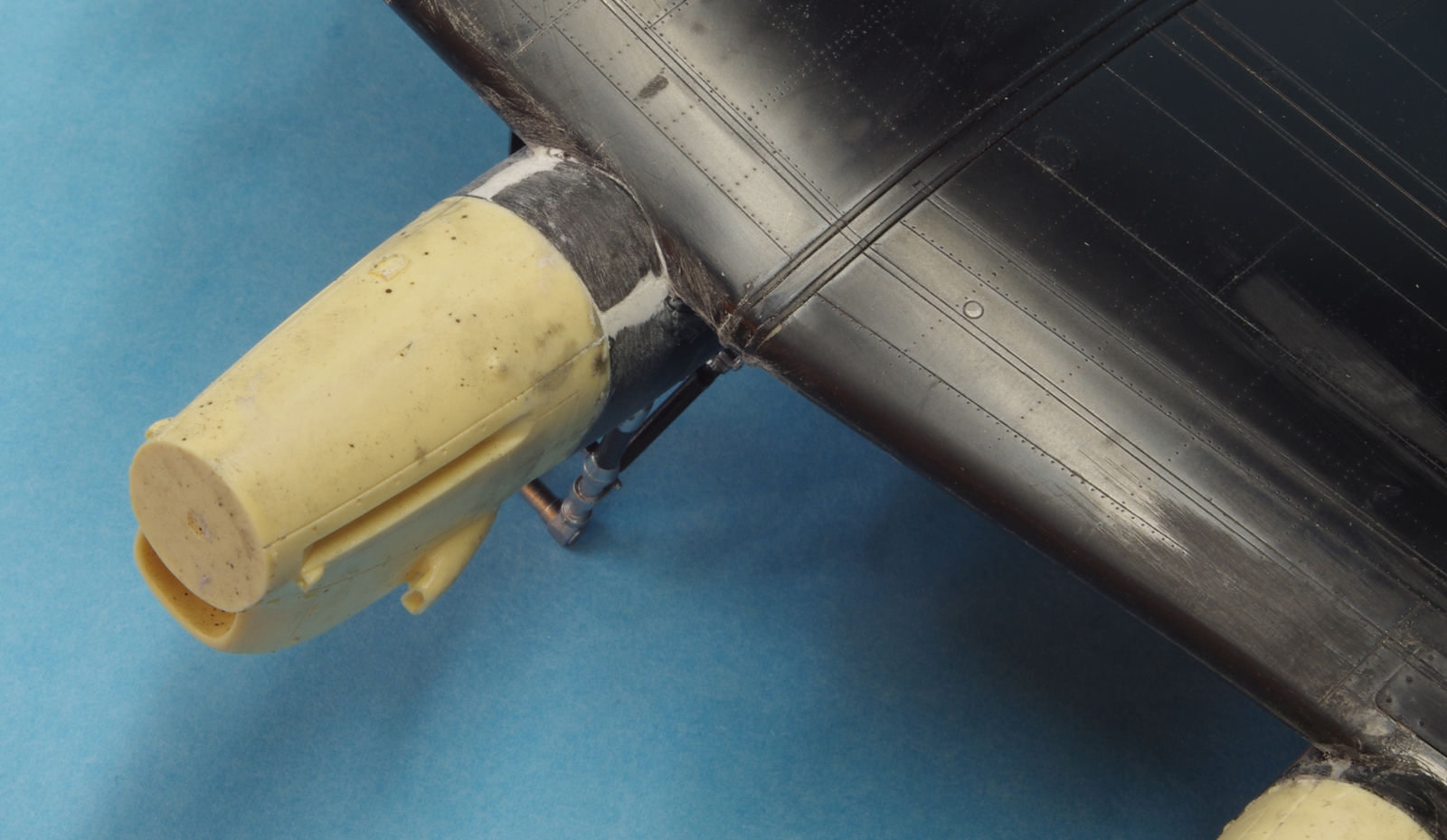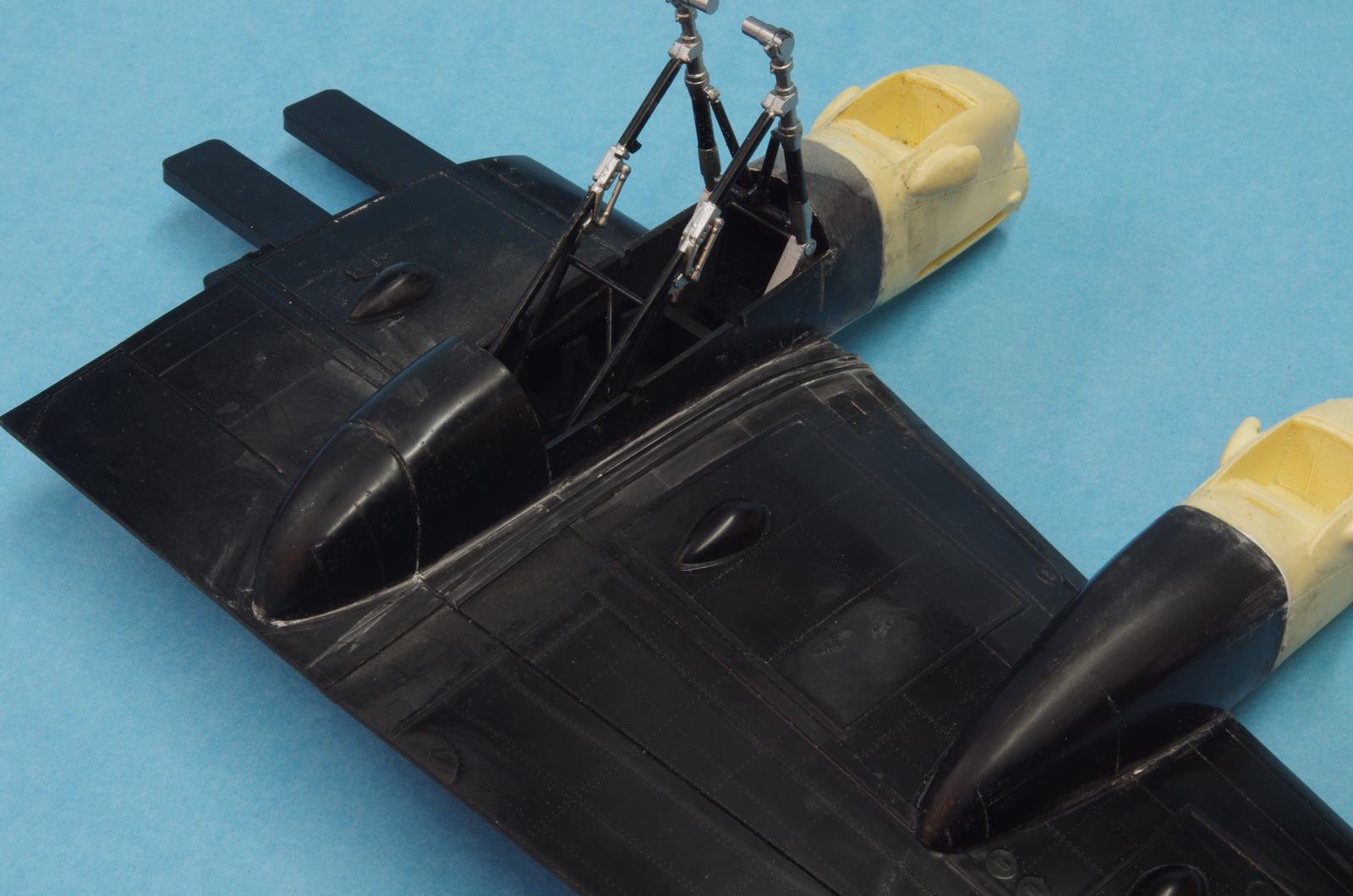More work on the Lancaster.

The upper join on the tamiya parts required filler and a little sanding behind the resin engine.

The inner nacelles did not conform exactly to the wing contour so Perfect Plastic Putty and Tamiya grey putty were both used. The parts were masked up close to the gap to reduce cleanup to a minimum.
Aves Epoxysculpt was used to contour the Tamiya inner nacelle to the Belcher Bits engine on the bottom. The sides of the Tamiya nacelles in all four positions had to be scraped down slightly and sanded smooth to match the nacelles. It wasn't much but there was a slight step.
Another view. The fit of the outer nacelles to the wing and to the Belcher Bits engines was good, just requiring the scraping and sanding on the sides.
The Eduard interior set for the Lancaster.
Two views of the seat. The little basket on the back is an oxygen bottle holder. There was also a frame that rested around the bottom of the seat. I have no idea where it went.
Some of the added parts around the pilot station. The larger box on the lower front later had to have the lower outside corner trimmed back to clear the fuselage.
The instrument panel, navigator's station, and wireless operator station.
There is a PE frame for the wireless operator's seat, in the foreground. There was a second one for the navigator's seat but Eduard made them both the same size so the navigator's seat got no PE, it is much narrower.
Eduard intended that the bomb aimer's computer would rest on the bottom of the fuselage, on the little tabs below it. No fit there so it was instead installed using hot glue so it could be spaced out and aligned well.
Another view.
The right side, with the engineer's panel. The seat for the engineer later was trimmed back some to clear the pe parts added to the right of the pilot's seat.
The relationship of the pilot seat, yoke, and instrument panel is a bit off. The yoke would be better off moved back 3/16 or so, and the panel 1/16. However, it does fit as designed.